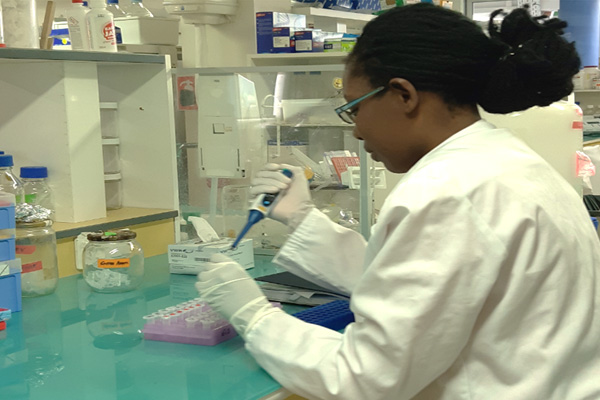There is a lack of information on the seasonal and spatial variations of bacterial pollution and the drivers of these variations within and around the Yamoussoukro lakes. In order to explain the dynamic of bacterial pollution of these lakes and assess the health risks associated with the contamination of surrounding vegetable crops, Escherichia coli and thermotolerant coliforms were used as indicators of pollution. Sampling was conducted from the lakes and surrounding vegetables such as carrots, lettuce and cabbage. In total 31 water points during 4 dry seasons and 4 rainy seasons, for the years 2015-2016 and 2016-2017 were sampled according to the Canadian sampling method. Water bacterial loads were high (710 CFU/mL and 791.8 CFU/mL) during the rainy seasons while the ones on the vegetables were high during the dry seasons (84.6 CFU/mL and 105.8 CFU/mL). The spatial location of the lakes from upstream to downstream and the rainy seasons strongly contributed to the evolution of bacterial loads from one lake to another. Moreover, it was shown that the dissolved organic carbon and the turbidity positively impacted the evolution of the bacterial loads throughout the two years. Overall no matter what season, the lake waters were not suitable for vegetable irrigation
Keywords: Escherichia coli, Thermotolerant coliforms, spacio-temporal dynamic, Yamoussoukro lakes
À ce jour au niveau des lacs de Yamoussoukro, il y a un déficit d'informations sur les variations saisonnières et spatiales de la pollution des eaux et des cultures maraichères environnantes et les facteurs qui les déterminent. Afin d'expliquer la dynamique de la pollution bactérienne de ces lacs et d'évaluer les risques sanitaires liés à la contamination des cultures légumières, Escherichia coli et les coliformes thermotolérants ont été utilisés comme indicateurs de la pollution. L'échantillonnage a été effectué au niveau des lacs et des légumes environnants tels que les carottes, la laitue et le chou. Au total 31 points d'eau, au cours de 4 saisons sèches et 4 saisons des pluies, ont été échantillonnés pendant les années 2015-2016 et 2016-2017 selon la méthode d'échantillonnage canadienne. Les charges bactériennes dans l'eau étaient élevées (710 UFC/mL et 791,8 UFC/mL) pendant la saison des pluies, tandis que celles des légumes étaient élevées pendant la saison sèche (84,6 UFC/mL et 105,8 UFC/mL). La localisation spatiale des lacs d'amont en aval et les saisons des pluies ont largement contribué à l'évolution des charges bactériennes d'un lac à l'autre. De plus, il a été démontré que le carbone organique dissous et la turbidité avaient un impact positif sur l’évolution des charges bactériennes au cours des deux années. Quelle que soit la saison, les eaux des lacs de Ya
Mots clés:Escherichia coli, coliformes thermotolérants, variations saisonnières et spatiales, Lacs de Yamoussoukro
https://doi.org/10.26167/6N8H-BE22
Received: March 5th 2019 Revised:June 17th 2019 Accepted:June 17th 2019 Published: June 27th 2019

infosim@sim-ivoire.com
+225 43 85 33 32 / 57 11 13 72
08 BP 2300 Abidjan 08
Views:
Download:
